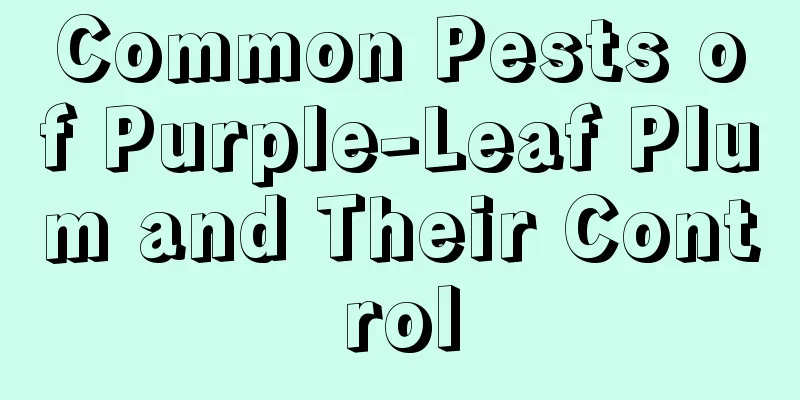Common Pests of Purple-Leaf Plum and Their Control

Common moth pests of purple-leaf plumMoth pestsMoth pests are one of the more common pests of purple-leaf plum, including bagworms and yellow thorn moths. These moth pests mainly damage the leaves of purple-leaf plum. Moth pests include bag moths and yellow thorn moths. After hatching, their larvae will eat the leaves of purple-leaf plum. As the pests continue to grow, the damage will gradually increase. The leaves of purple-leaf plum will be eaten up in a short period of time. In severe cases, it may even cause the branches to wither or the entire plant to die. Prevention and treatment methodsIn order to prevent purple-leaf plum plants from being harmed by moth pests, timely protection is needed and the cocoons need to be removed in a timely manner. When moth pests appear, they need to be concentratedly trapped and killed in the larval stage or sprayed with insecticides such as diazinon suspension, cathepsin, and chlorpyrifos. You can also use natural enemies to capture pests. Common scale insects on purple-leaf plumScaleThe scale insect is a common sucking pest of purple-leaf plum. If the insect eggs overwinter in the soil during the winter, an insect pest may break out in the next year. When an insect infestation occurs, scale insects will hatch on the trees in January and February and suck sap. Prevention and treatment methodsWhen it comes to scale insects, the most important thing is prevention. In winter, you need to remove dead leaves and diseased branches of purple-leaf plum to prevent insect eggs from overwintering. In addition, you can also scrape off the peeling bark on the tree and fill the gaps with mud. If there is a scale infestation next year, you can apply sticky insect glue on the tape to prevent the pests from climbing onto the tree. You can also use natural enemies for prevention and control, and spray pesticides when necessary. Common red spider mites on purple-leaf plumRed SpiderRed spider mites are actually a common pest of purple-leaf plum. Red spider mites usually break out in May and June because the weather conditions during this period are more conducive to the growth and reproduction of red spider mites. Prevention and treatment methodsWhen red spider mites occur, you can use pesticide spraying methods, such as spraying some trichloronate solution for prevention and control. |
<<: Common insect pests of Photinia
>>: Pests of Iris and Their Control
Recommend
Cultivation methods and precautions of golden rainbow orchid
The golden rainbow orchid is a variety of orchid,...
Does the Venus flytrap need to be watered every day? Can it be watered with tap water?
1. Do you need to water it every day? Generally s...
Hibiscus flower pictures
When does hibiscus flower bloom? The flowering pe...
Phalaenopsis semi-hydroponic method
Phalaenopsis semi-hydroponic method When growing ...
When is the right time to plant autumn cucumbers?
Best time to plant autumn cucumbers Autumn cucumb...
Can mint be propagated by cuttings?
Methods of reproduction Mint likes a warm and hum...
How to propagate figs by cuttings and when How to propagate figs by cuttings
The survival rate of fig cuttings is high in spri...
How to propagate trees and what to pay attention to
Tree propagation method There are four ways of tr...
What flowers bloom in summer
1. Lotus The lotus blooms between June and Septem...
How to grow schefflera
Temperature management of Schefflera cultivation ...
The benefits of eating onions, and what should not be eaten with onions
1. Benefits of eating onions Reduce the risk of c...
What fertilizer to use for Clivia and how to prepare it
1. Nitrogen, phosphorus and potassium fertilizers...
Can I plant roses in front of my door?
Can I plant roses in front of my door? You can pl...
Hibiscus status as the national flower
Hibiscus Hibiscus is a small tree with triangular...
How to grow Hoya in autumn
1. Loosen the soil In autumn, it is best to use a...









